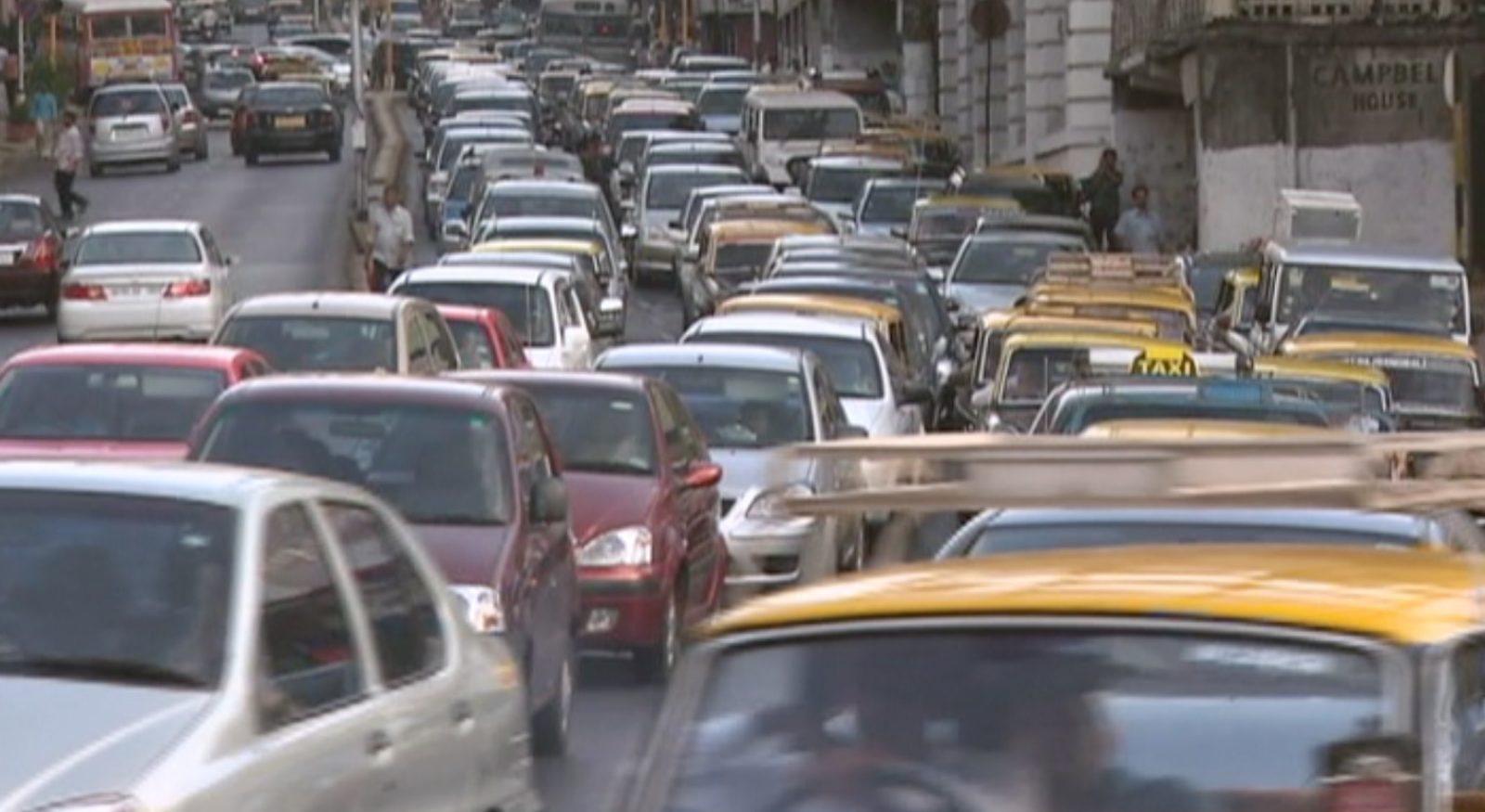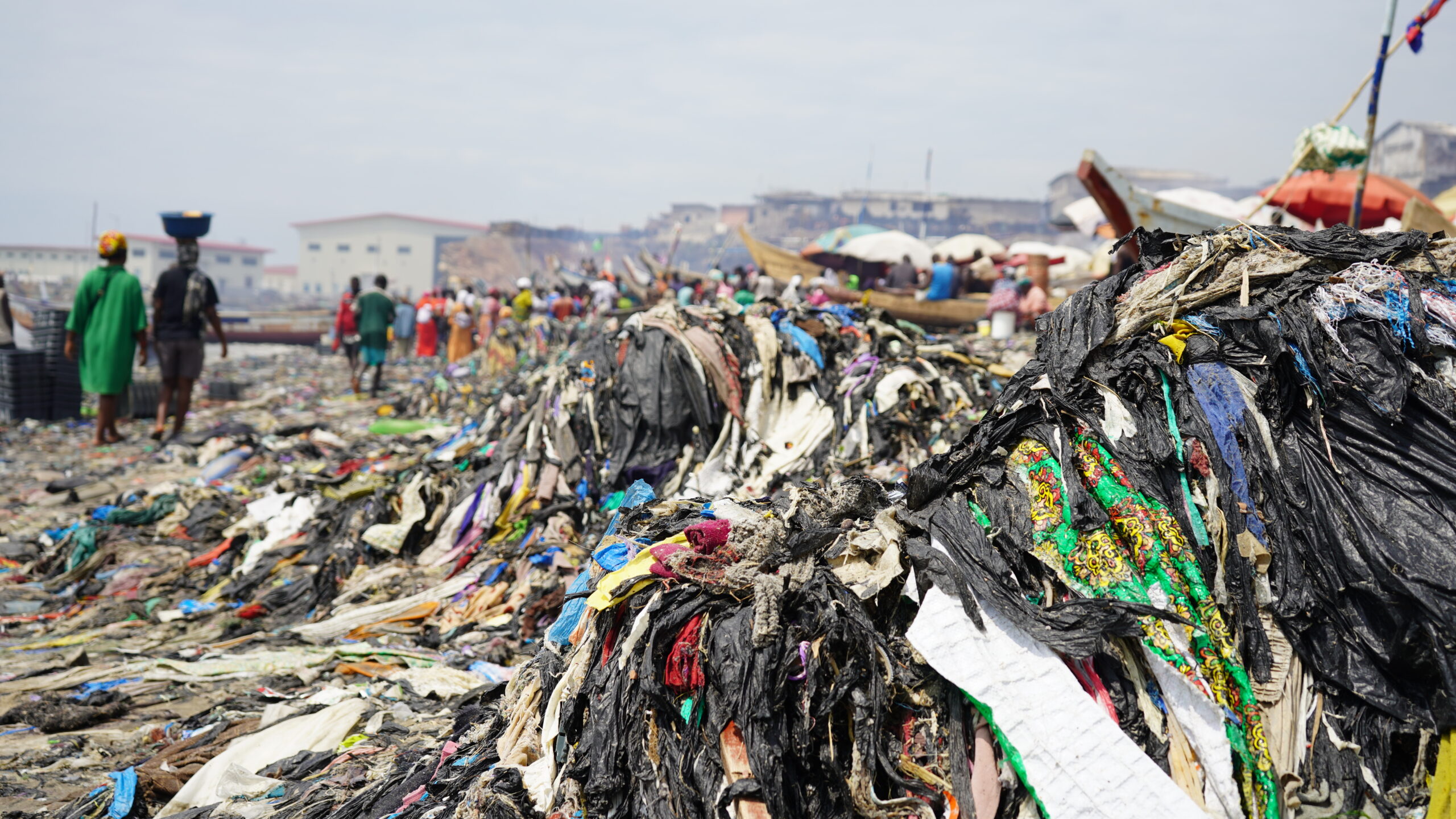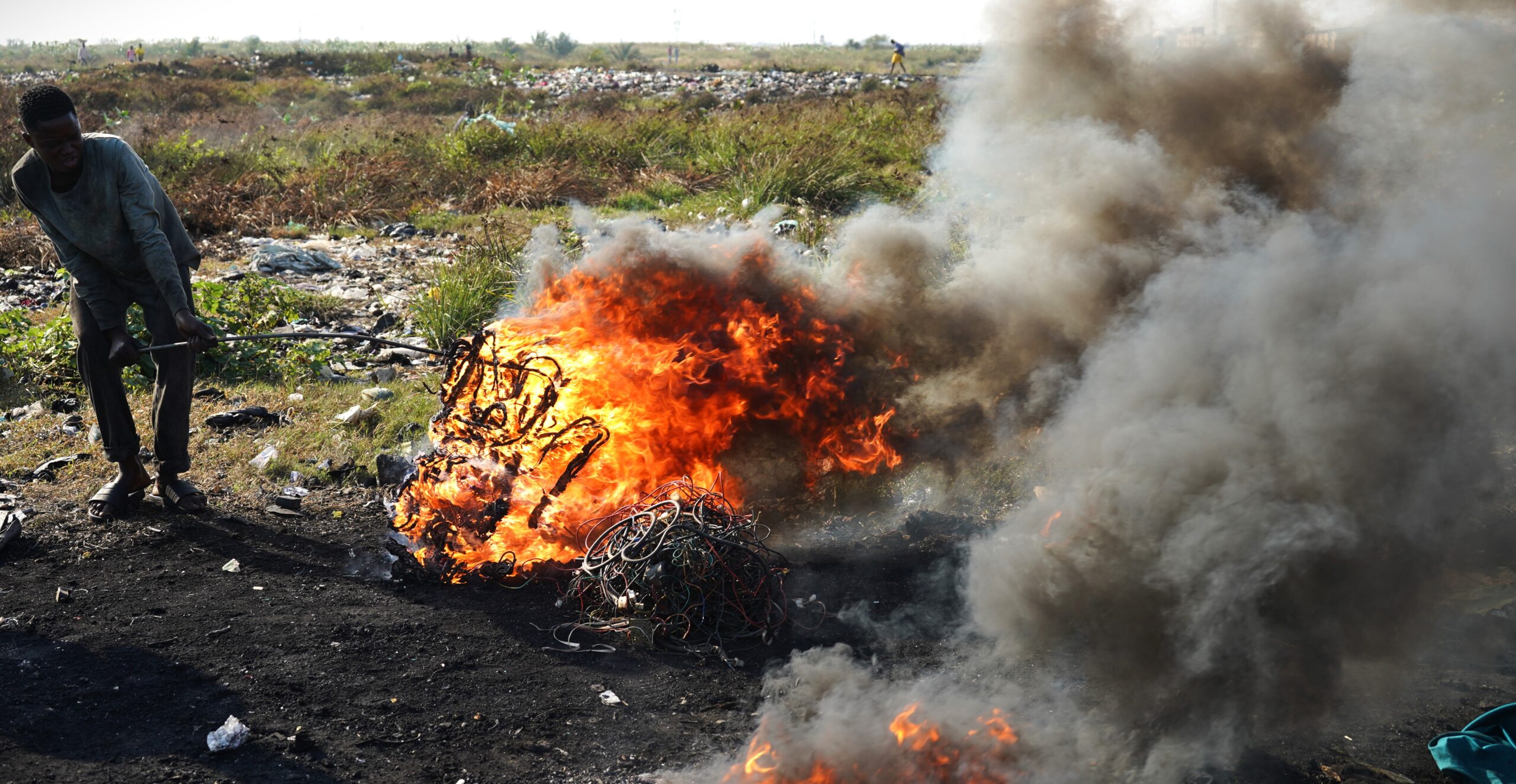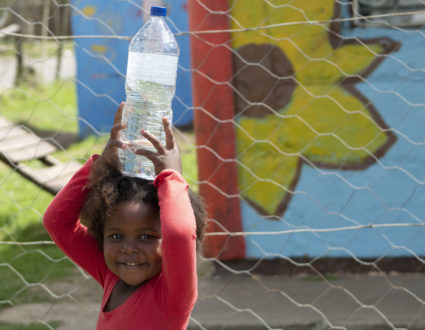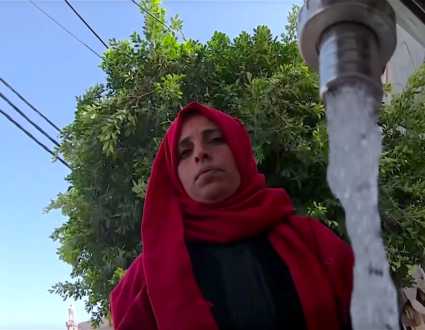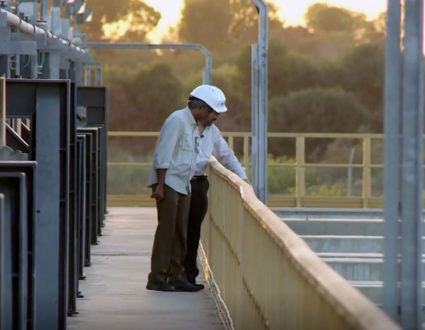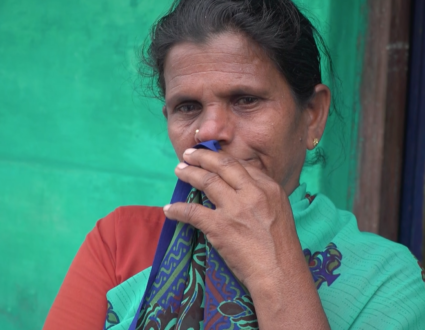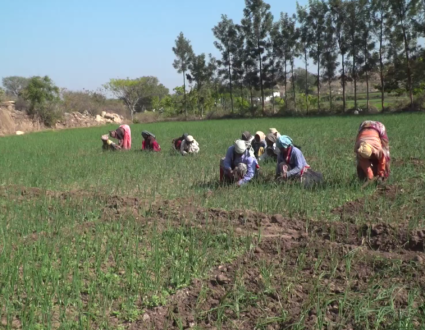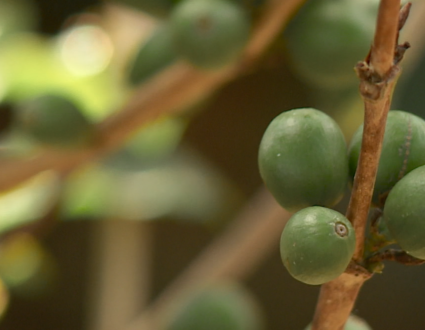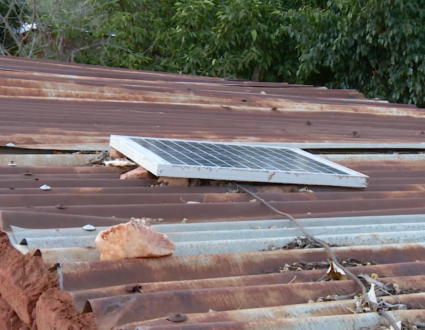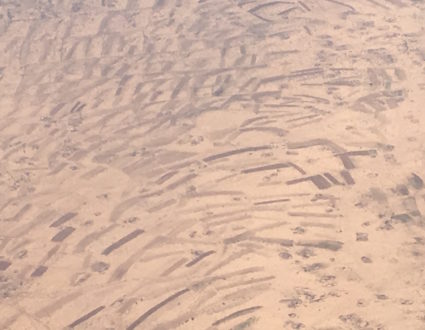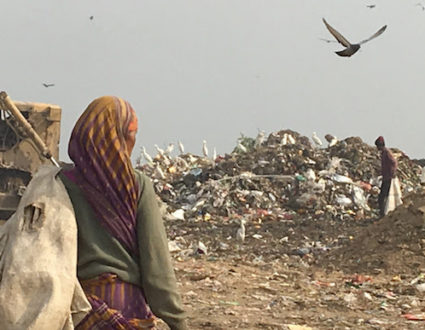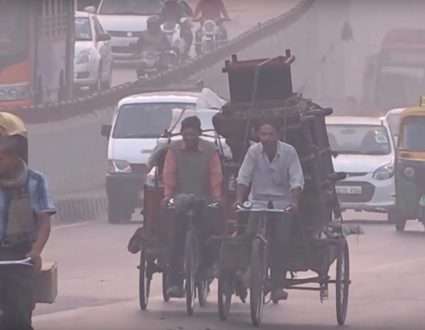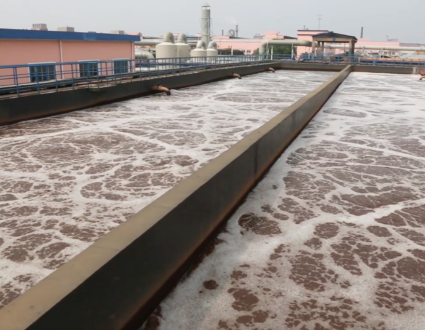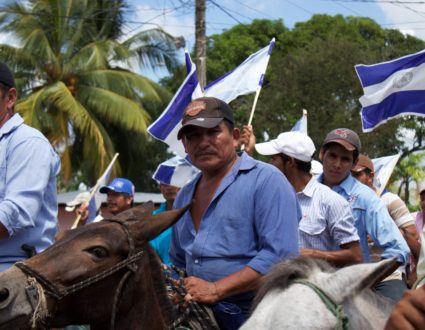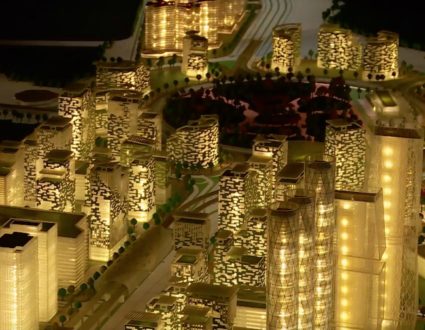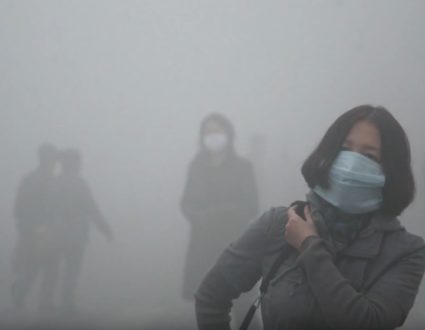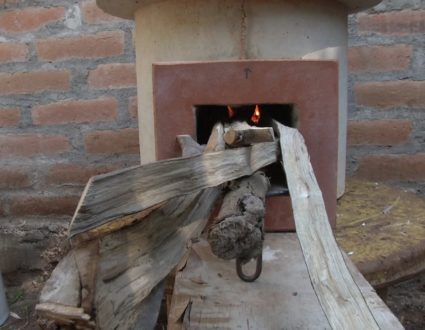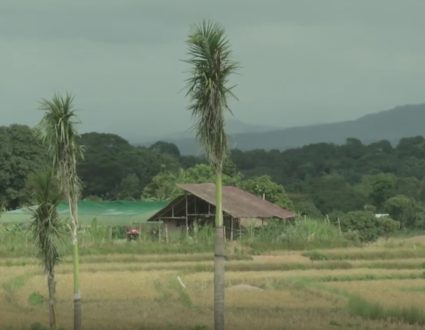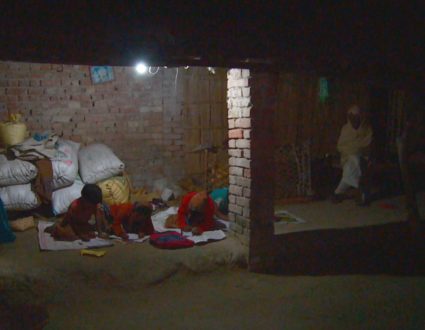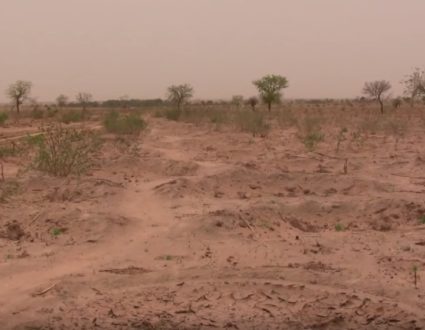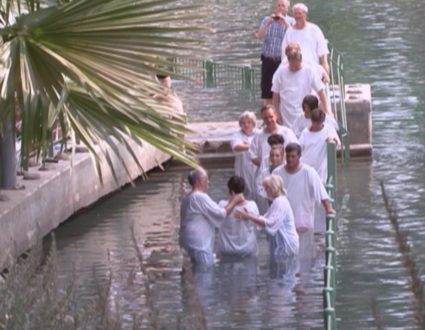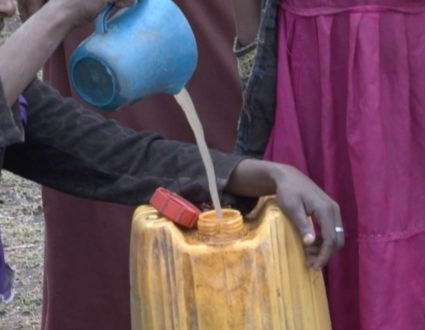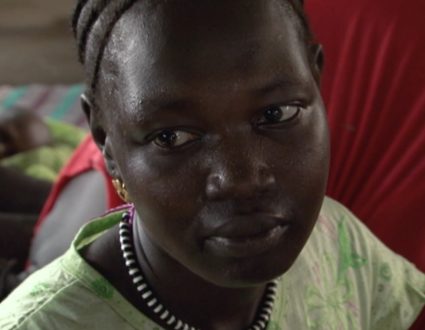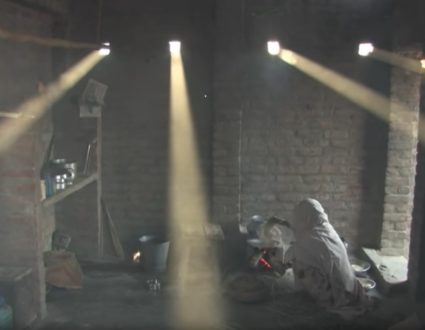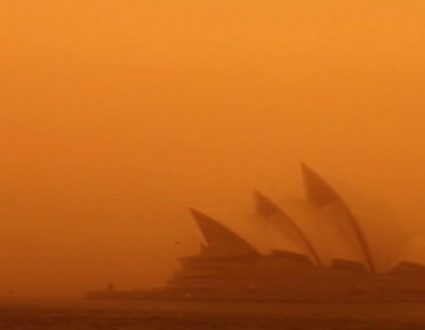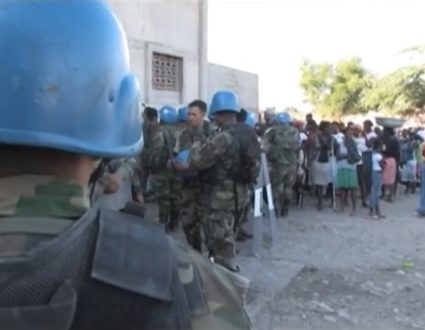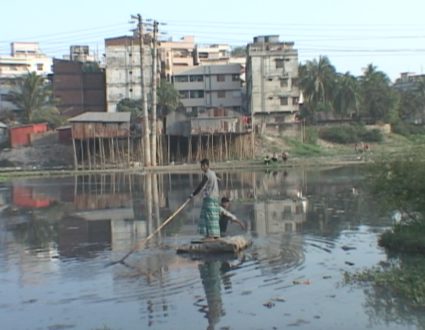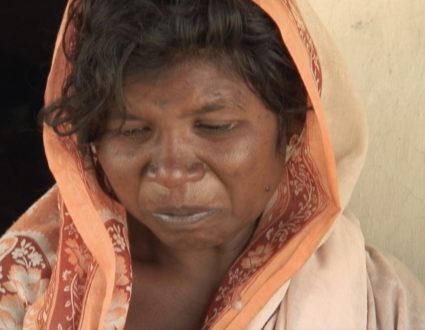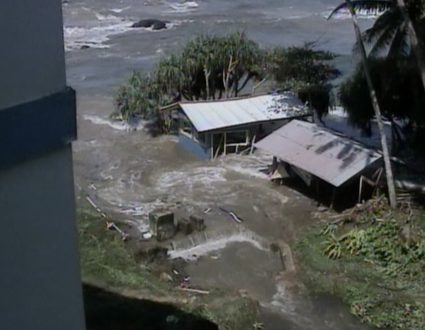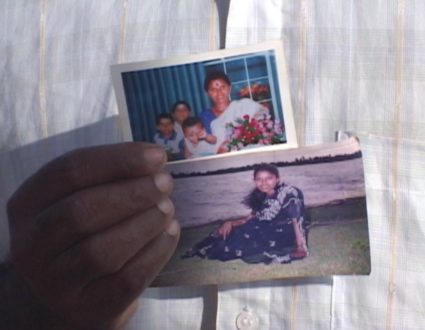Judy Woodruff:There is a toxic brew in much of the air over India, sparked by everything from farmers burning their fields to industrial pollution.Special correspondent Fred de Sam Lazaro examined this problem just over two years ago. And now he has this update.
Fred de Sam Lazaro:Smoke billows from the fields of Northern India, as farmers burn remnants of their crops after harvest. They say it’s the easiest and quickest way to get their fields ready for the next planting.But what is convenient for the farmers is wreaking havoc in nearby cities. The smoke from thousands of fields mixes with the pollution from millions of cars and trucks. Those noxious clouds of smog make it hard to see during the day and hard to breathe.Sakshi Chauhan is recovering from a severe throat infection.
Sakshi Chauhan (through translator):I was told that I have an infection. Because of this, I cannot eat anything from outside. The doctor told me not to go out, told me not to go out because of smog.
Fred de Sam Lazaro:The smoke is so thick that, earlier this week, flights at New Delhi’s international airport were delayed or canceled due to poor visibility.The city declared a public health emergency, restricted the number of cars allowed on the road, and ordered all construction work to stop.
Mukesh Kumar (through translator):The pollution has risen to great levels. Our company has halted construction since November 1. We had it shut even before that. We are following the official order. We have stopped all work, and all the precautions and initiatives are being taken to curb pollution here.
Fred de Sam Lazaro:Also contributing to the rampant smog, plumes of smoke generated by fireworks during the recent festival of Diwali, a celebration of light where, now, during the day, there is less.Weather and wind patterns are also blamed for trapping pollutants over India’s capital. Dirty fuels are the culprit from several sources. Automobiles are the major one. On average, 1,400 new vehicles are added to Delhi’s streets every day, most now burning a highly polluting diesel long outlawed in Europe and the United States.By 2021, diesel fuel here will meet European standards. The government has also promised to shut down old coal-fired plants and restrict new ones. But pollution has been worsening for years. Two years ago, to get an idea of how dirty the air is, we went to one of the cleanest places in Delhi, the American Embassy School.It serves the children of American and other expats and diplomats. Many don face masks, but only until they’re inside.Ellen Stern was the school’s director.
Ellen Stern:We have an air system that goes all the way through the school. We now have four different kinds of filters on it that filter out various kinds of things.
Fred de Sam Lazaro:Barun Aggarwal showed me the elaborate system his company, BreatheEasy, has set up in the school, pulling out the first layer of filter, thickly coated with a grimy soot.So, if you were to walk outside today, this is what is coming into your lungs?
Barun Aggarwal:Absolutely.
Fred de Sam Lazaro:The fine particle filters also show stark before-and-after evidence of the harmful air outside. You would think such systems would be in strong demand, but Aggarwal says, aside from a few buildings mostly occupied by expats, its been a hard sell.Among India’s growing middle-class, he says, there’s denial or indifference, a sense that pollution is the price of India’s rapid economic progress.
Barun Aggarwal:The number of myths that are there with regards to air pollution in India are incredible.The first one that I get by mostly Indians is that, if I breathe clean air for eight hours, then my immunity will come down, and when I go out, I will fall sick. Completely wrong, because this is — if you believe that, then you should be giving your children two packets of cigarettes to smoke every day.
Fred de Sam Lazaro:Kamal Meattle is an environmental activist who also designed the embassy school’s filtration system. It works well, he says, but it is no panacea for a city of 20-plus million residents.
Kamal Meattle:You cannot have just air purifiers and cleaning systems for the people who can afford them. It has to be for the people who are on the road, who are in (INAUDIBLE) or slums.
Fred de Sam Lazaro:Meattle, who trained at MIT, has developed lower-cost ways to cope with the pollution, plants, thousands of them in this rooftop greenhouse of his six-story office building. Clean air is produced, and each floor is pulling in the air as needed.
Kamal Meattle:And there are plants on each floor also. This is a central air cleaning system for the whole building.
Fred de Sam Lazaro:Plants do more than produce oxygen, he says. They are natural air purifiers. Their roots eat bacteria and fungi and they absorb chemicals like formaldehyde and benzene produced by office products.
Kamal Meattle:Areca palms for the daytime, bamboo palm.
Fred de Sam Lazaro:Installing plants is a small step people can take indoors, but he acknowledges there’s a huge complex problem outside these clean air bubbles, not easily solved in India’s chaotic democracy.The Indian government says it’s taken steps to reduce pollution. But, in the meantime, for years to come, India’s capital and, for that matter, most of its major cities will continue to be among the most difficult places on Earth to breathe.For the “PBS NewsHour,” this is Fred de Sam Lazaro in New Delhi.
Judy Woodruff:Fred’s reporting is a partnership with the Under-Told Stories Project at the University of St. Thomas in Minnesota.
Toxic Air
Carbon dioxide, ozone and fine carbon particles get trapped over India’s capital, mostly due to dirty fuels, causing long-term health consequences such as lung and heart disease. Special correspondent Fred de Sam Lazaro reports on some efforts to lessen the environmental toll on residents.
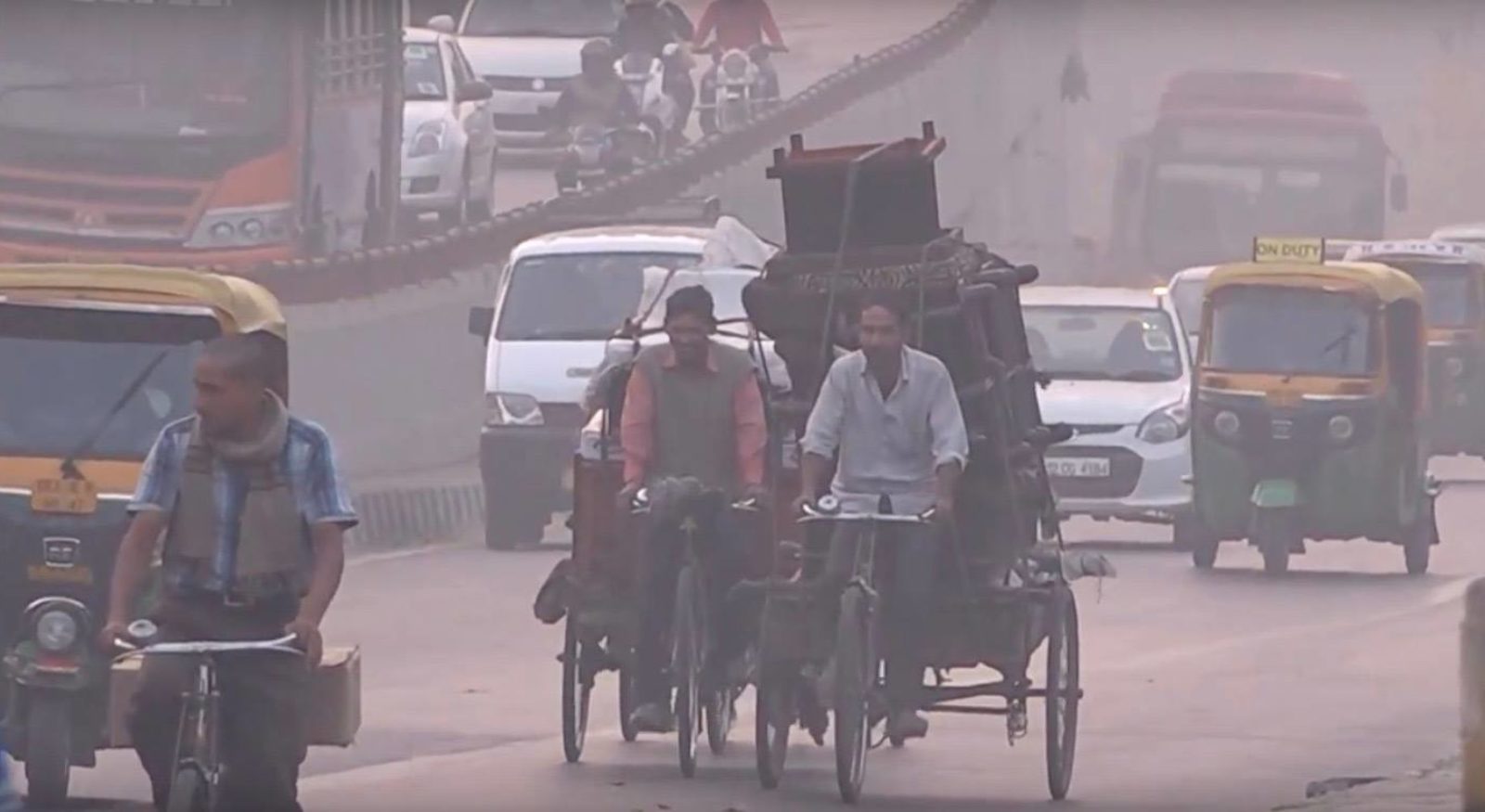
Choked Roads, Choked Air
On average, 1,400 new vehicles are added to Delhi’s streets every day, most now burning a highly polluting diesel long outlawed in Europe and the United States.
A Perfect Pollution Storm
Weather and wind patterns are blamed for trapping pollutants over India’s capital. Carbon dioxide, ozone and fine carbon particles are released from several sources of dirty fuels.
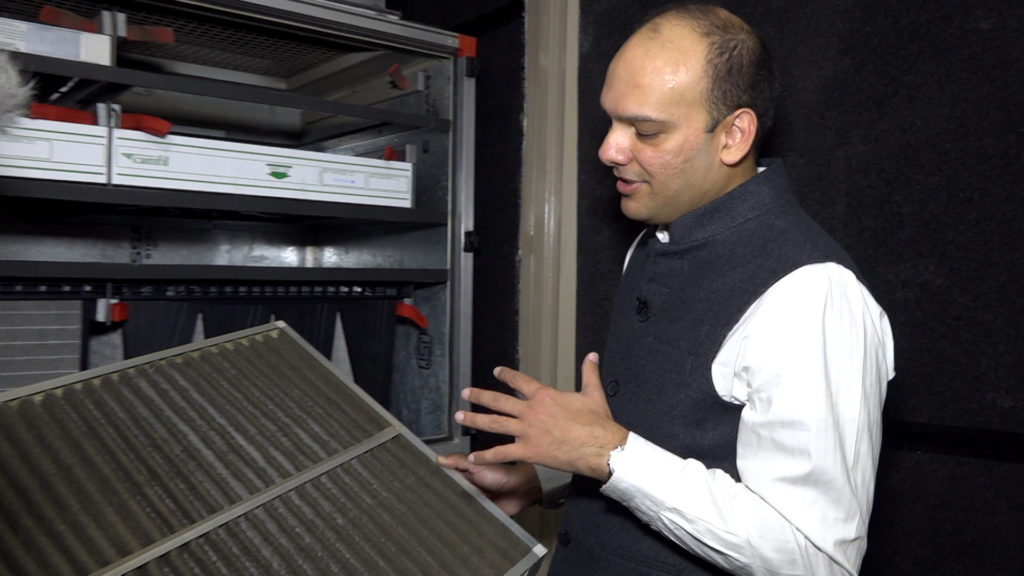
BreathEasy
Kamal Meattle
Meattle designed the embassy school’s filtration system, but he says it is no panacea for a city of 20-plus million residents. Another method he proposes, and uses in his own building, is growing hundreds of air scrubbing plants.
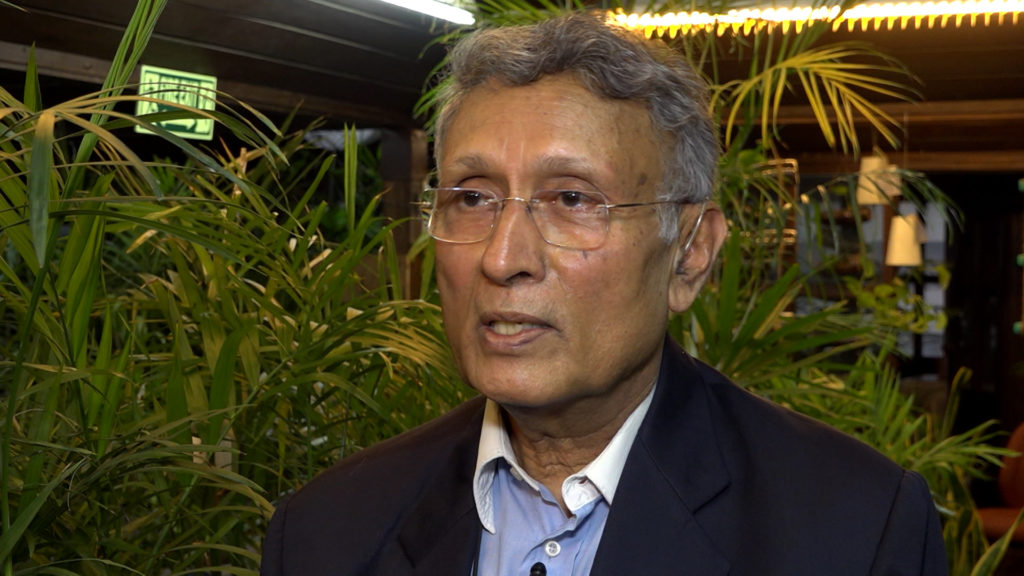
Delhi now outranks Beijing as the world’s most polluted city. PBS Special Correspondent Fred de Sam Lazaro reports on the crisis and several proposed solutions to make Delhi breathable again.
JUDY WOODRUFF: India’s capital, Delhi, now outranks Beijing as the world’s most polluted large metropolis. And it’s taking a toll on its residents’ health.
But, as special correspondent Fred de Sam Lazaro reports, there are efforts under way to make the city’s air less toxic.
It’s part of his ongoing series Agents for Change.
FRED DE SAM LAZARO: He murmurs and he gasps, waiting for a spot to free up, for a chance to just breathe.
As nebulizer treatments open up the lungs of a handful of patients, dozens more await their turn at the chest clinic in a Delhi government hospital.
This is the scene outside of the doctor’s office. Clinic hours are 9:00 in the morning until 1:00. And on a typical day, the doctor says he sees about 120 patients who’ve been here before and 30 brand-new ones.
Three to four patients are seen at the same time, in the same room, by Dr. Raj Kumar and his team of junior doctors and residents. The most common complaint? Simply change of season, the winter, which brings dust and tiny carbon particulates into the environment
DR. RAJ KUMAR, India: When there is a change in environment or increase in the particulate matter and everything, these asthmatic and COPD patients do get exacerbation of their symptoms.
FRED DE SAM LAZARO: They get exacerbation of their symptoms?
DR. RAJ KUMAR: Yes.
FRED DE SAM LAZARO: Dr. Kumar can do little more than check on their medications and advise patients to avoid some of the most polluted outdoor air on the planet.
Weather and wind patterns are blamed for trapping pollutants over India’s capital, carbon dioxide, ozone and fine carbon particles. Dirty fuels are the culprit from several sources. Automobiles are the major one. On average, 1,400 new vehicles are added to Delhi’s streets every day, most now burning a highly polluting diesel long outlawed in Europe and the United States.
By 2021, diesel fuel here will meet European standards. The government has also promised to shut down old coal-fired plants and restrict new ones. And wood- and coal-burning brick kilns has been moved farther away from the city.
But the pollution continues. To get an idea of how polluted the air is, we went to one of the cleanest places in Delhi, the American Embassy School. It serves the children of American and other expats and diplomats. Many don face masks, but only until they’re inside, says the director, Ellen Stern.
ELLEN STERN, Director, American Embassy School: We have an air system that goes all the way through the school. We now have four different kinds of filters on it that filter out various kinds of things.
FRED DE SAM LAZARO: Barun Aggarwal showed me the elaborate system his company, BreatheEasy, has set up in the school, pulling out the first layer of filter, thickly coated with a grimy soot.
So, if you were to walk outside today, this is what is coming into your lungs?
BARUN AGGARWAL, BreatheEasy: Absolutely.
Most of the black carbon actually passes through a filter like this. This is mostly dust. And the black carbon will get trapped in the finer particle filters.
FRED DE SAM LAZARO: So, how old is this accumulation?
BARUN AGGARWAL: Less than six days.
FRED DE SAM LAZARO: The fine particle filters also show stark before-and-after evidence of the harmful air outside. You would think such systems would be in strong demand, but Aggarwal says, aside from a few buildings mostly occupied by expats, its been a hard sell.
Among India’s growing middle class, he says, he’s there’s denial or indifference, a sense that pollution is the price of India’s rapid economic progress.
BARUN AGGARWAL: The number of myths that are there with regards to air pollution in India are incredible. The first one that I get by mostly Indians is that, if I breathe clean air for eight hours, then my immunity will come down, and when I go out, I will fall sick.
Completely wrong, because this is — if you believe that, then you should be giving your children two packets of cigarettes to smoke every day.
FRED DE SAM LAZARO: The problem, like cigarette smoking is, except for those with lung disease, the health consequences of pollution, such as lung and heart disease and stroke, come later in life.
KAMAL MEATTLE, Environmental Activist: It’ll happen in 10, 20, 30 years. So if you ask a 20-year-old, is this important, they say, no, no, no, forget it. I have to make money. I have to get ahead in life.
FRED DE SAM LAZARO: Kamal Meattle is an environmental activist who also designed the embassy school’s filtration system. It works well, he says, but it is no panacea for a city of 20-plus million residents.
KAMAL MEATTLE: You cannot have just air purifiers and cleaning systems for the people who can afford them. It has to be for the people who are on the road, who are in (INAUDIBLE) slums. And they have to be dealing with people who go on motorcycles, go on metros, go on buses. They’re the ones who are exposed most to the pollution.
FRED DE SAM LAZARO: Meattle, who trained at MIT, has developed lower-cost ways to cope with the pollution, which we measured just outside an office building he owns in central Delhi, using an instrument used to measure fine carbon particles.
KAMAL MEATTLE: Two-ninety, 288.
FRED DE SAM LAZARO: What is the WHO standard?
KAMAL MEATTLE: It’s 50.
FRED DE SAM LAZARO: So, what you have outside your building…
KAMAL MEATTLE: Six times.
FRED DE SAM LAZARO: … is an air quality that’s six times worse than the WHO standard?
KAMAL MEATTLE: That’s right. That’s right.
FRED DE SAM LAZARO: Can we step back inside and see what it’s like inside?
From 290, the level dropped to nine, thanks not just to filters and air purifiers, but to plants, thousands of them in this rooftop greenhouse.
But this greenhouse produces clean air, and each floor is pulling it in as needed.
KAMAL MEATTLE: Yes.
And there are plants on each floor also. This is the central air cleaning system for the whole building.
FRED DE SAM LAZARO: Plants do more than produce oxygen, he says. They are natural air purifiers. Their roots eat bacteria and fungi and they absorb chemicals like formaldehyde and benzene produced by office products.
KAMAL MEATTLE: These are areca palms for the day time, bamboo palm.
FRED DE SAM LAZARO: Most importantly, he says, these are common, fast-growing species and should be in every home for clean air benefits to both lungs and brains.
KAMAL MEATTLE: Harvard and also University of California at Berkeley have done studies to show that your cognitive abilities improve in such an environment.
FRED DE SAM LAZARO: They’re small steps people can take indoors, but he acknowledges there’s a huge complex problem outside these clean air bubbles, not easily solved in India’s chaotic democracy.
KAMAL MEATTLE: I think its politicians anywhere in the world, they think the same, that they will only act when they have learned a solution and it’s a very straightforward solution. Then they will implement it and take credit for it. But until they find that they don’t — or they know that they don’t have a clean, straight solution, they will keep the matter confused.
FRED DE SAM LAZARO: But environmentalists say years of lobbying seem to be yielding some results, helped by prodding from India’s Supreme Court, which has compelled government agencies to act.
One group claiming the credit says it distributed pollution gauges to prominent Delhiites. Its leader, Sunita Narain, says campaign targets included the court.
SUNITA NARAIN, Activist: We took the machine in. We put the machine there. And the chief justice said, this is unacceptable. So I think, slowly, that sense of unacceptable, this is not right, this is not fair, it’s increasing the burden of health on our children, we have to change it, that’s happened.
FRED DE SAM LAZARO: But, in the meantime, for years to come, India’s capital and, for that matter, most of its major cities will continue to be among the most difficult places on Earth to breathe.
For the PBS NewsHour, this is Fred de Sam Lazaro in New Delhi.
JUDY WOODRUFF: Fred’s reporting is a partnership with the Under-Told Stories Project at the University of St. Thomas in Minnesota.


